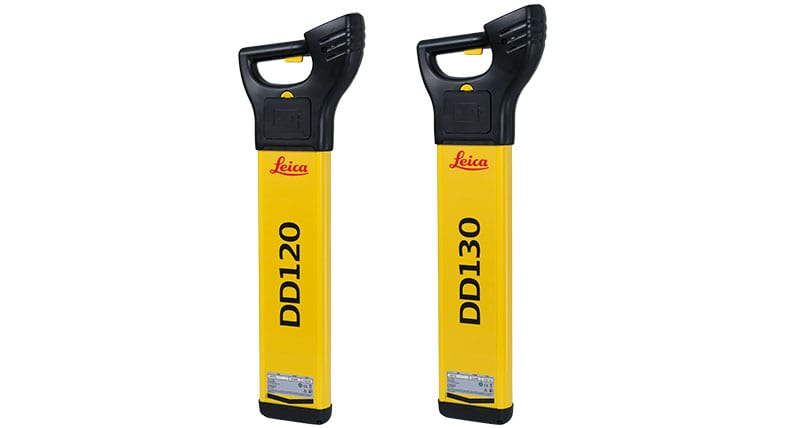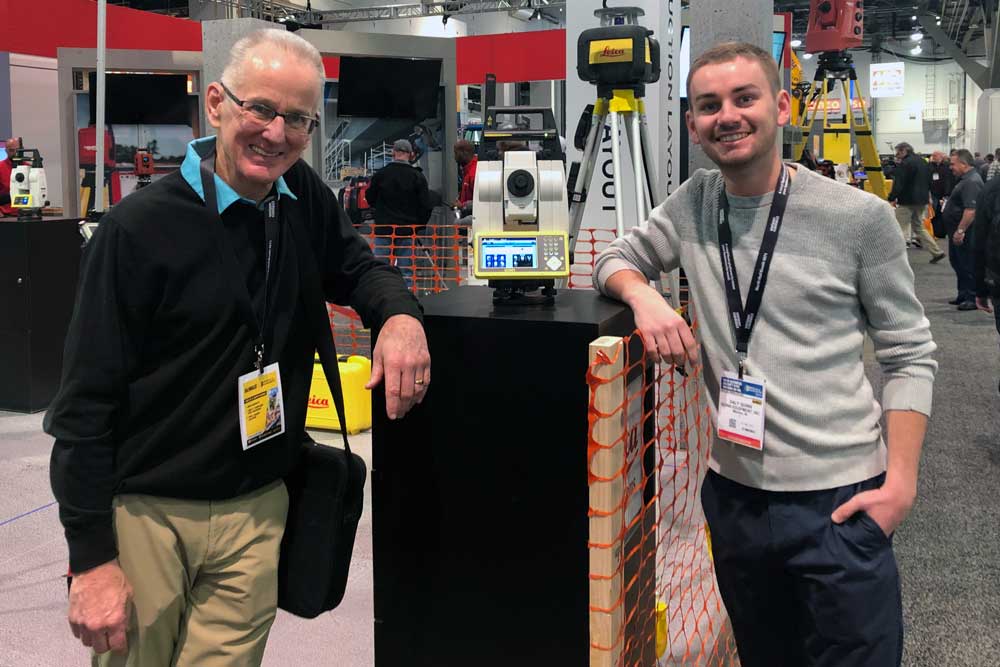Utility locators are a specialized type of construction professional that is responsible for locating and marking underground utility lines before excavation begins. Utility locators work with the use of various high-tech instruments such as ground-penetrating radar, magnetic induction loop detectors, and cable tracers to find these utilities
What are underground cable utility locators?
The equipment used by the utility locator crew consists of several different types of equipment. The most common equipment used in locating underground vaults and pipelines is ground-penetrating radar (GPR).
GPR is an instrument capable of sending high-frequency radio waves into the ground. When these waves encounter a buried utility line, they are reflected on the surface, where the utility locator detects them. This data is then converted into a display that shows the electric field strength over a ground area. The power of this reflection tells how deep below the surface these utilities are located.
How to use underground cable locators?
GPR units can also be used to determine if a utility line is in a specific location. This unit requires the construction personnel to "sweep" the GPR over an area of ground. The person using this instrument can tell if a utility line runs to a certain extent by how strong the radio reflection from the GPR becomes when it encounters the buried utilities.
A second standard piece of equipment used by utility locators is a magnetic induction loop detector. These detectors consist of a circular band of copper tubing that has been wrapped around a pipe buried below the surface. The utility company will place electrical energy into this coil and send an electrical current into the line. This will cause currents to flow through any metal objects that are set.

What is a Cable Tracer?
Cable tracers are devices used by electrical utilities to trace the location of individual electric power cables. A tracer may be an actual device, such as a metal detector, ground inspector, or computer program.
They use several high-tech instruments to find and mark underground utility lines. What are these devices, and how do they work?
Electrical utilities can use cable tracers and magnetic loop detectors to trace the location of individual electric power cables or gas lines. A tracer is an actual device, such as a metal detector, ground inspector, or computer program.
Cable tracers are devices used by electrical utilities to trace the location of individual electric power cables. A tracer may be an actual device, such as a metal detector, ground inspector, or computer program.
Magnetic loop detectors are devices used to detect the location of underground utility lines by searching for disturbances in the earth's magnetic field. Typically this includes water and gas lines, but not electric cables.
Leica DD 120 Underground Cable Utility Locators
Leica DD 120 underground cable Locator has a built-in directional 180-degree magnetic fluxgate gradiometer and an integrated GPR system to precisely locate and mark underground utilities. dd200 cable utility locator double drive 200 cable and electrical utility and telecommunication line locator, the double drive 200 is designed for high performance in combination with ease.
Pros
• good full-range Locator at a low price point.
• sturdy design.
• high performance.
• precise location of underground lines in all soil conditions.
Cons
• accessories are expensive to buy separately.
purchase price: $2420
Leica D 130 Cable Underground Utility Locators
The d130 is the latest addition to the d family of robust and reliable underground utility locating systems. Using patented technology, it locates both electrical lines and cables up to 200 feet (60 m) away with unmatched accuracy. d 130 has a GPR scanning depth of 30 ft (10m)
Pros
+ outstanding depth capabilities.
+ very precise.
+ lightweight and easy to carry around.
Cons
- more expensive than other machines in its class.
Purchase price: $2,780 from Quinn equipment. Which are an authorized Leica Geosystems building and construction dealer for robotics total station solutions.
Leica DD 220 Smart Utility Locators
The dd220 smart utility locator is a cost-effective tool for single-service utilities. Combining a 180-degree fluxgate gradiometer, a GPR system, and a high-resolution camera makes it possible to detect all types of underground services quickly and easily with pinpoint accuracy.
Pros
+ outstanding depth capabilities.
+ lightweight and easy to carry around.
Cons
- accessories are expensive to buy separately
purchase price: $3320 from Quinn equipment with their readily available online store
Leica DD 230 smart Utility Locator
The dd230 is the best underground utility locating equipment in the d family of robust and reliable underground utility locating systems. Using patented technology, it locates both electrical lines and cables up to 200 feet (60 m) away with unmatched accuracy.
Various uses of the Leica DD 230 smart Utility Locator
• construction works
• public works and utilities
• telecommunications companies, service providers, and contractors.
Various accessories of the Leica DD 230 smart Utility Locator: magnets, cables, coils, camera head, standard coil cable for dd230, more details on https://quinnequipment.com/product-category/underground-utility-locators/ for discounted offers to contact us for the best total station price.
Pros
• easy controls.
+ requires less time than other equipment in its class
+ excellent range and accuracy
• outstanding depth capabilities.
• precision on all types of ground.
• excellent resolution and image quality.
Cons
• accessories are expensive to buy separately.
purchase price: $4490
What are underground wire utility locators?
An underground wire locator is a device that detects the presence of any metallic object located inside the ground. The process of searching for buried metal is known as "underground locating" or simply "locating."
There are two main categories of locating devices - electromagnetic and electronic. The electromagnetic type locators are devices that use electromagnetic waves to detect lines or pipes. Electromagnetic waves are produced by two coils rotating around the same axis. One is connected to an oscillator circuit and has a radiofrequency current that feeds into the rotating coil.
The rotating ring is connected to a capacitor (a device that stores electric charge); when it goes near the metallic object, the interaction between the capacitor's plates and the magnetic field changes, which is detected by a receiver connected to another rotating coil.
Electromagnetic vs. electronic wire locators
The Wire Locator- is a hand-held device with an antenna system, which emits electromagnetic waves.
The Multimeter- is a measuring instrument equipped with a display and keypad allowing for the measurement of various electrical parameters.
Several meters on the market measure particular items such as voltage level, current intensity, resistance, or phase sequence.
Electronic locators can detect all types of metallic objects, including all types of buried utilities
• steel
• iron
• any metal.
Such devices are divided into two groups: VLF and PI. In the first case, the Locator generates a high-frequency signal that penetrates through soil or concrete. When it reaches a metallic object, its characteristics are modified to form a harmonic motion detected by the receiver.
In VLF- very low-frequency method, various frequencies are used to detect nonmetallic objects such as water, plastic pipes, etc., while underground metal objects require higher frequencies of 50 kHz or above.
Futura bl-102 Underground Utility Locators
The best underground wire locator in the new lineup is the Futura bl-102. Its lightweight portability and the intelligent wizard, ix, include a range of intelligent functions that provide a more efficient, faster, and safer way to complete even the most complex jobs.
Uses of Futura bl-102
• locating, marking, and tracing all single-phase, three-phase, and telephone cables.
• precise identification of underground structures such as gas lines, water mains, and tracer wire connections.
• easy to use with the smart wizard ix, which includes cable tracking that identifies cable paths within a junction box or pedestal.
• multi-functional tool that can also be used for gas pipe detection or as a reference system for road construction.
• the most versatile machine in its class with accuracy, depth, and resolution capabilities not found on any other machine.
Disadvantages of Futura bl-102
. • No locates on plastic or glass tubing (insulated wire)
• Limited depth capability for locating conductors that are more than 18" deep.
What is an underground wire finder?
An underground wire finder uses it to detect the presence of buried electrical wires, especially those in street lighting systems.You can purchase it for $835 from the store at an affordable yet discounted price.
What is a pipe locator?
A pipes locator is an electronic device that detects the path of hidden metal, plastic, and copper pipes. This allows plumbers to locate and mark out their position so they can be accessed for future reference.
Uses of a pipes locator
• help to reduce time and costs by reducing the number of unnecessary call-outs.
• durable, reliable, and portable.
• available in a variety of types with varying specifications
Leica Detect Plumber Package DD 120
a detect plumber package is a valuable tool for plumbing, heating, and drainage work. It locates the position of hidden pipes or cables to enable you to get on with your work more quickly and with less wasted effort.
uses of the Leica Detect Plumber Package DD 120
• easy to use for both plumbing and heating engineers who want a comprehensive tool that can locate all pipes simultaneously in the shortest possible time.
• saves time by reducing unnecessary digging and damage to tiles, baths, and flooring in bathrooms and kitchens.
pros
+ outstanding depth capabilities.
+ lightweight and easy to carry around.
+ great resolution and image quality.
cons
- accessories are expensive to buy separately.
purchase price: $2,980
Questions? Don't hesitate to call us at 319-320-4982 or shop our catalog

Underground Utility Locators
Contact us to find the best Underground Utility Locators for finding underground wire and utilities before your break ground.
View more details at the Leica website





